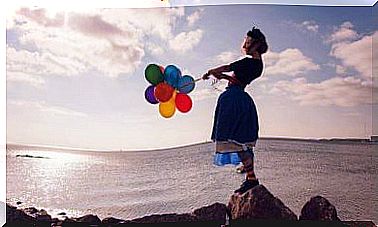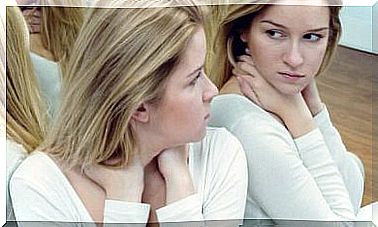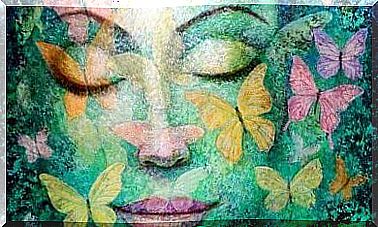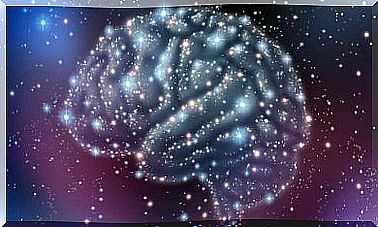Akinetopsia, Or Movement Blindness

What is akinetopsia? Imagine that one day you wake up in the morning, open the refrigerator, take the milk to make yourself a coffee, and pour it into a cup. Once you have enough milk, we will lift the bottle. So far, nothing very special.
Now let’s change the situation: you start to pour the milk, but nothing comes out of the bottle. You try again, but still no milk… Until suddenly the cup is filled to the brim and there is milk everywhere. How is it possible ? What happened ? This is a case of akinetopsia.
Akinetopsia is the inability to perceive moving objects. It is a visual agnosia. As Arnedo, Bembibre and Triviño (2012) describe, visual agnosia is “an impairment in the visual recognition of objects (or concrete characteristics of stimuli like color or movement), with preservation of other visual abilities like acuity, the fact of scrutinizing or inking that of differentiating figure and ground, as well as other higher functions ”.
People affected by akinetopsia see the world in photograms. They therefore have great difficulty in carrying out activities as simple as crossing a street. Because they see the world in photograms, they are unable to see a moving car.
They see it there, then there; so, at best, they can guess the transition (speed). Therefore, since they lack the perception of movement and don’t know what level a car is at at any given time, they can easily get run over.
In the example of the milk cup, the trick is to put a finger on the edge of the cup and, thus, to note through the touch when the cup is full. However, in some situations it is not that easy.
Driving, for example, is an activity prohibited for those affected by akinetopsia. We should also mention that if you know someone who has this type of agnosia, it is best not to throw anything at them to catch on the fly; surely the object you send her will land right in her face or on her. Better to pass him the object in question directly in his hand.
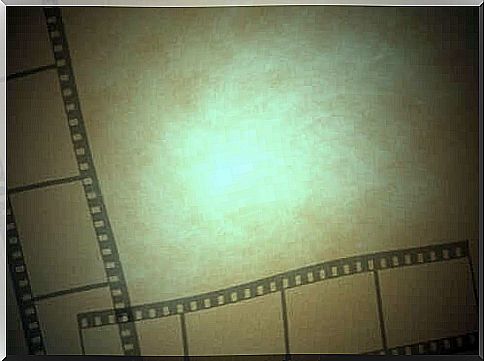
The different types of akinetopsia
Fine or discreet achinetopsia
This is the most common type of akinetopsia. The movement is seen as an exhibition of continuous photographs (with frequent updating, so that the person will be able to reconstruct the movement with sufficient precision). In the example of the cup, instead of seeing it empty and then full at once, people affected by this type of achinetopsia would see how quickly the cup fills up through static images. Therefore, fine or discrete akinetopsia is more troublesome than disabling.
Macroscopic akinetopsia
This is the type of akinetopsia with the least incidence, but also the most severe. The blindness to movement is total. Patients affected by this pathology see the image of a car in the distance, and directly after the image of the same car very close to them. They therefore lose the information of the movement between one image and another. Therefore, they are unable to predict the movement of an object external to them. They can even sometimes witness “strange appearances”.
Imagine that a person affected by macroscopic akinetopsia is in their living room, and another person enters the room discreetly. It is very likely that the subject suffering from the pathology will suddenly find himself in front of someone.
Where does the problem come from ?
Visual information travels forward (feedforward), that is, from the retina to the thalamus, and from the thalamus to the occipital cortex. As the receiver moves away, this information acquires greater computational complexity. However, this information is also processed backwards (feedback).
This backward processing, as Javier Cudeiro (2008) of the University of La Coruña points out, “is established via the return connections through which a given area can influence (or modulate) the activity of the areas preceding it. the visual system ”.
Cudeiro claims that this is a discovery of great importance, and for this he points to the temporal lobe as an example. This area appears to be essential for the perception of movement and its direction. Thus, lesions of the temporal lobe or electrical micro-stimulation made it possible to verify the appearance of serious deficits such as akinetopsia.
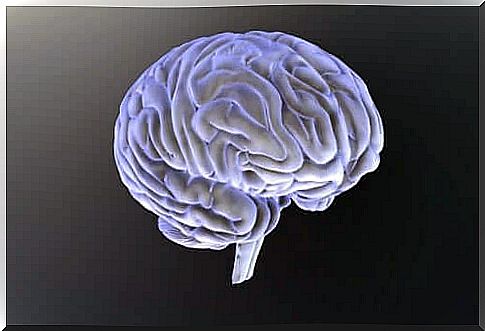
Final remarks
Without a doubt, we are talking about an agnosia in the middle of a study phase; there is still much to discover about it. Each progress made is therefore of great importance because of the valuable contribution that it can make to improve the quality of life of patients, patients whose life remains altered on a daily basis.
Álvarez and Mascujan report that “these patients have the sensation that objects change place rather than having a continuous and fluid movement, appearing and disappearing at different positions”. What should it be like to be for a day in the skin of a person with this agnosia?
These authors also report that perceiving their environment in this way causes patients great difficulty in knowing whether an object is moving away or approaching. So how do you know if a car is approaching or moving away? How to move in a world in constant motion?

